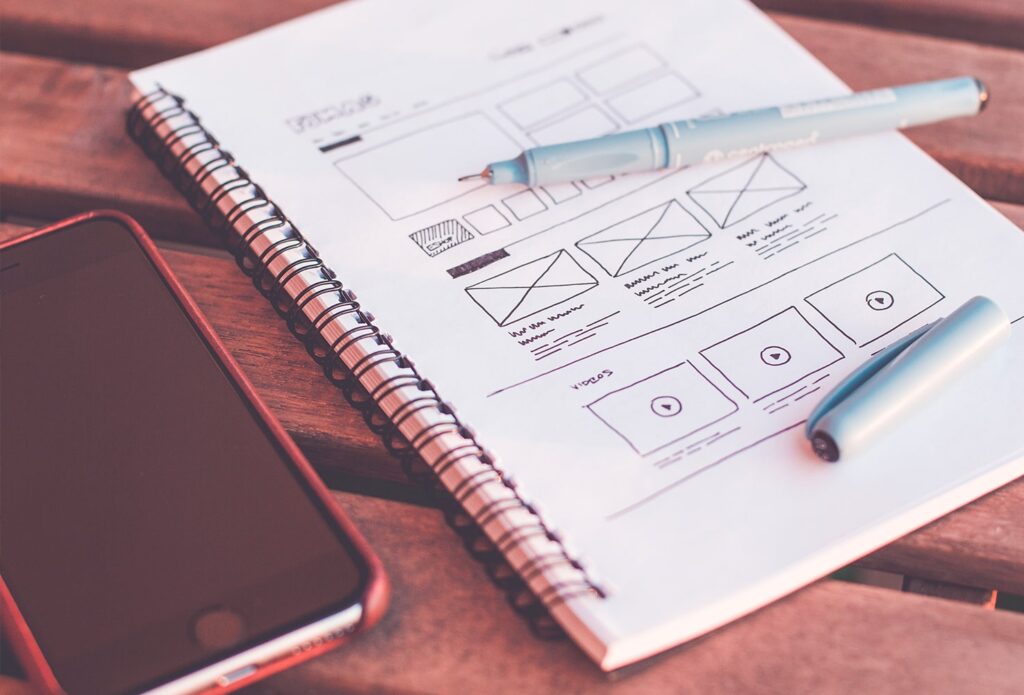
Mobile apps have become an essential part of our daily lives, catering to various needs and making our routines more efficient. From social networking and gaming to health and productivity, mobile apps have changed the way we interact with technology. If you’re looking to enter this exciting domain and create your own mobile app, you’re in the right place. This article will guide you through the entire process, from ideation to development, ensuring that your app stands out in the crowded app market.
Designing mobile apps: first steps
Choosing a Goal: Defining the Purpose of Your App
The first and foremost step in designing a mobile app is to define its purpose. Having a clear goal helps you stay focused throughout the development process and ensures that your app meets the needs of your target audience. Start by asking yourself the following questions:
- What problem does my app aim to solve?
- How will my app make users’ lives easier or more enjoyable?
- What are the main features and functionalities that my app will offer?
Make sure your app’s goal is specific, measurable, attainable, relevant, and time-bound (SMART). Having a well-defined purpose will serve as a foundation for the entire app design process.
Understanding Your Target Audience: Identifying Who Will Use Your App
Identifying your target audience is crucial, as it helps you design an app that caters to their specific needs and preferences. To understand your audience, consider the following aspects:
- Demographics: Age, gender, location, education, occupation, income, etc.
- Psychographics: Interests, hobbies, values, lifestyle, etc.
- Technographics: Device usage, preferred platforms, tech-savviness, etc.
You can gather this information through surveys, interviews, or by analyzing data from similar apps. Understanding your target audience will help you make informed decisions about your app’s features, design, and marketing strategy.
Outlining Your Idea: Sketching the Foundation of Your App
Once you have a clear goal and understand your target audience, it’s time to outline your app idea. Start by listing the key features and functionalities that your app will offer. This will give you a rough idea of the app’s structure and how the different elements will interact with each other.
Next, create a user flow diagram to visualize the user journey within your app. This will help you identify potential bottlenecks or areas where users may encounter difficulties. At this stage, it’s important to be open to feedback and consider revising your idea if necessary. You can also seek advice from experts or potential users to ensure that your app idea is on the right track.
Defining Your Value Proposition: What Makes Your App Unique
In the competitive world of mobile apps, it’s crucial to have a strong value proposition that sets your app apart from the rest. Your value proposition should clearly communicate the unique benefits your app offers and why users should choose your app over the competition. To define your value proposition, consider the following questions:
- What are the main features that differentiate my app from similar apps?
- How does my app address users’ pain points more effectively than competing apps?
- What are the unique benefits or experiences that my app provides?
Make sure your value proposition is concise, clear, and compelling. A strong value proposition will not only help you attract users but also guide your app’s design and development process.
Designing mobile apps: research
Uncovering User Needs: Understanding What Your Target Audience Wants
To create an app that truly resonates with your target audience, it’s crucial to understand their needs, goals, preferences, and pain points. Conduct user research through methods such as surveys, interviews, and focus groups to gather valuable insights about your users.
Analyze the data you collect to identify patterns and trends that will help you make informed decisions about your app’s design and features. Keep in mind that user needs might evolve over time, so consider conducting ongoing research to stay in tune with your audience.
Conducting Market Research: Studying the Competition
Understanding the competitive landscape is essential for designing an app that stands out. Conduct market research to identify the strengths and weaknesses of competing apps and discover potential opportunities for your app to shine. Analyze aspects such as:
- Features and functionalities
- User interface and experience
- Pricing and monetization strategies
- User reviews and ratings
Use the insights you gather to identify gaps in the market and refine your app’s value proposition. This will help you create a unique and appealing app that sets you apart from the competition.
Designing mobile apps: design
Translating Research into Design: Incorporating User Insights into Your App
With a solid understanding of your users and the competition, it’s time to translate your research into actionable design decisions. Begin by prioritizing the features and functionalities that will best address user needs and preferences. Create a detailed list of these features, taking care to strike a balance between offering value and maintaining simplicity.
Next, use the insights from your user and market research to guide your app’s user interface (UI) and user experience (UX) design. Consider factors such as:
- App navigation and layout
- Visual design and aesthetics
- Accessibility and usability
- Responsiveness and performance
Remember to keep your target audience in mind throughout the design process, ensuring that your app caters to their preferences and expectations.
Creating Wireframes and Prototypes: Visualizing Your App
Wireframes and prototypes are essential tools for visualizing your app’s design and functionality before diving into development. Wireframes are simple, schematic representations of your app’s layout, providing a visual guide for the placement of elements and features. Prototypes, on the other hand, are interactive mockups that simulate the app’s user experience.
Creating wireframes and prototypes allows you to:
- Test and validate your app’s design and functionality
- Identify potential usability issues or bottlenecks
- Gather feedback from users, stakeholders, or team members
- Iterate and refine your design before committing to development
Use tools like Sketch, Figma, or Adobe XD to create wireframes and prototypes that effectively communicate your app’s design and functionality.
Designing mobile apps: development
Choosing the Right Platform and Tools: Ensuring the Best Development Experience
Selecting the appropriate platform and development tools is crucial for creating a high-quality app. When choosing a platform, consider factors such as your target audience’s preferences, device compatibility, and the features you want to include in your app. The two main platforms are Android and iOS, with each having its own set of development tools and languages.
For Android development, you can use tools like Android Studio and programming languages like Java or Kotlin. For iOS development, you can use Xcode along with Swift or Objective-C. Alternatively, you can opt for cross-platform development tools like React Native or Flutter, which allow you to create apps for both Android and iOS using a single codebase.
Selecting the right tools and languages will depend on factors such as your team’s expertise, project requirements, and budget constraints.
Turning Design into Code: Bringing Your App to Life
With your app’s design and functionality in place, it’s time to turn your vision into a working app. This involves translating your wireframes and prototypes into code, implementing the various features and functionalities you’ve outlined during the design process.
Keep the following tips in mind during the development phase:
- Follow best practices for app development, ensuring your code is clean, modular, and well-documented.
- Implement responsive design techniques to ensure your app looks and functions well on different devices and screen sizes.
- Test your app throughout the development process to identify and fix any bugs or issues that may arise.
- Follow best practices for app security, such as encrypting sensitive data, validating user input, and securing API connections.
- Regularly update your app’s dependencies and libraries to address potential security vulnerabilities.
Collaborate closely with your design team during this phase, ensuring that the final product aligns with the initial vision and meets user expectations.
Are you ready to build your app?
In conclusion, designing a successful mobile app involves a series of well-thought-out steps, from defining your app’s purpose and understanding your target audience to creating wireframes and ensuring performance and security. By following the basic principles outlined in this article, you’ll be well on your way to creating a mobile app that truly resonates with your users and stands out in the competitive app market.
As you embark on your mobile app creation journey, remember that you don’t have to do it alone. Innovatika is here to help you bring your app idea to life. With our expertise in app design and development, along with our deep understanding of the latest trends and user preferences, we can help you create an app that not only looks great but also delivers an exceptional user experience. Learn more about how Innovatika can help in creating your app.







